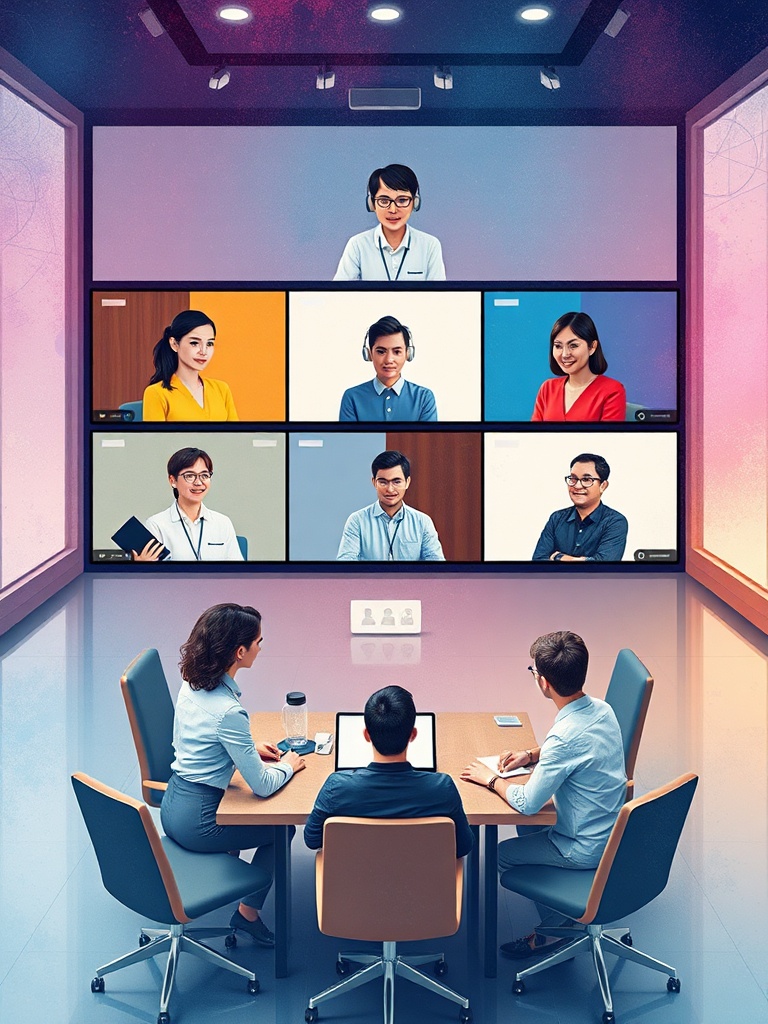How to Run Effective Virtual Meetings: Practical Tips for Remote and Hybrid Teams
Virtual meetings are a core part of modern collaboration. With teams distributed across locations and hybrid schedules common, mastering virtual meeting skills boosts productivity, reduces friction, and keeps people engaged. Below are practical strategies and features to prioritize for smoother, more effective meetings.
Why virtual meetings matter
Virtual meetings are more than video calls.
They enable real-time decision-making, client presentations, training, and team bonding without travel. When run well, they save time and clarify ownership. When run poorly, they cause fatigue, confusion, and duplicated work. Small design choices make a big difference.
Prepare for success
– Set a clear agenda: Share a short agenda with objectives and time limits before the call. That frames expectations and helps attendees prepare.
– Invite the right people: Keep attendee lists tight; include decision-makers and necessary contributors only. Share optional attendance guidelines for observers.
– Share materials in advance: Distribute slides, documents, or pre-reading. That reduces screen-share time and shifts focus to discussion and decisions.
– Choose the right type of meeting: Use synchronous calls for decisions and brainstorming; use asynchronous tools (shared docs, recorded presentations) for status updates that don’t require live interaction.
Run meetings that respect time and attention
– Start on time, end on time: Respect participants’ schedules by sticking to the agenda and closing on schedule.
– Use a meeting facilitator: Assign someone to steer the conversation, manage time, and capture decisions.
Rotate this role to build meeting ownership across the team.
– Set camera and audio norms: Encourage cameras for active participation, but respect bandwidth and privacy concerns.

Recommend headset use for clearer audio.
– Promote focused participation: Use directed questions, round-robin check-ins, or hand-raise features to give quieter attendees space to contribute.
– Manage multitasking: Share a meeting etiquette note—no unnecessary tabs or chats unrelated to the agenda. Consider brief breaks for long sessions.
Leverage features that boost engagement
– Breakout rooms: Use small groups for workshops, problem-solving, or practice sessions to increase interaction.
– Polls and reactions: Quick polls and nonverbal reactions help gather fast consensus and keep energy up.
– Real-time collaboration: Co-edit documents or whiteboards during the call so ideas are captured and ownership is visible.
– Recording and transcripts: Record strategic meetings and enable transcripts for accurate notes, accessibility, and follow-up.
After the meeting: close the loop
– Send a concise recap: Share decisions, owners, deadlines, and next steps within 24 hours to maintain momentum.
– Turn action items into tasks: Add follow-up items to project trackers and assign clear due dates.
– Gather feedback: Periodically ask attendees what’s working and what could be improved. Short surveys or a quick feedback poll after a meeting keep formats adaptive.
Address accessibility and security
– Captioning and transcript options make content accessible to participants with hearing needs and to non-native speakers.
– Use secure meeting settings: Require waiting rooms for external guests, lock meetings when full, and manage screen-sharing permissions to protect sensitive information.
Avoid meeting fatigue
Keep meetings focused, purposeful, and as short as possible. Consider meeting-free blocks during the day to preserve deep work time and encourage asynchronous updates where appropriate.
Well-designed virtual meetings are efficient, inclusive, and actionable.
By combining clear preparation, disciplined facilitation, thoughtful use of platform features, and consistent follow-up, teams can make virtual time feel as productive as in-person collaboration.





Leave a Reply